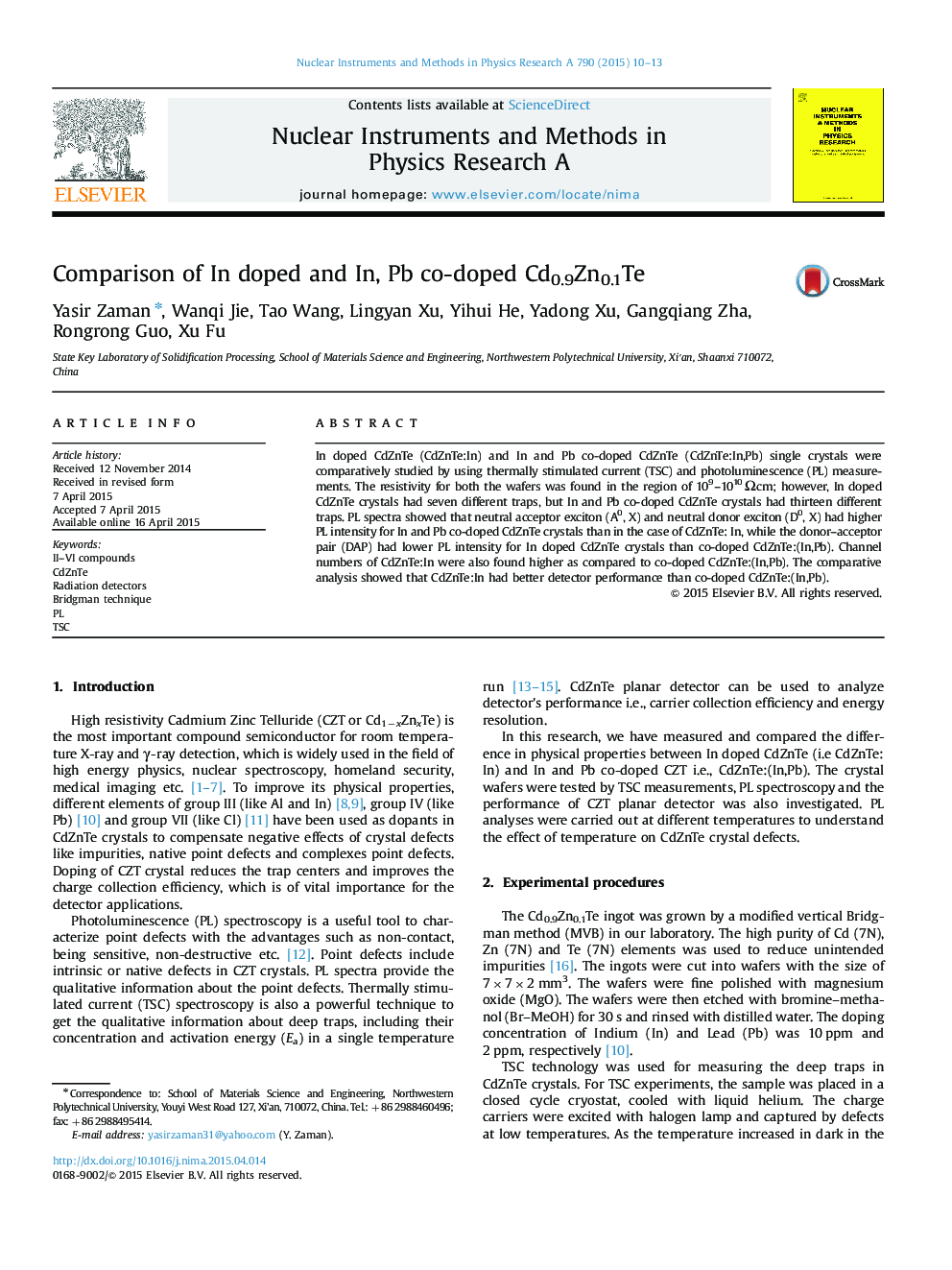| Article ID | Journal | Published Year | Pages | File Type |
|---|---|---|---|---|
| 1822245 | Nuclear Instruments and Methods in Physics Research Section A: Accelerators, Spectrometers, Detectors and Associated Equipment | 2015 | 4 Pages |
•Comparison of In doped and In, Pb co-doped Cd0.9Zn0.1Te.•Resistivity for the two different wafers is in the region 109–1010 Ω cm.•In and Pb co-doped CdZnTe have thirteen different traps, which are almost double of CdZnTe:In.•Channel numbers of CdZnTe:In are higher compared to co-doped CdZnTe:(In,Pb) reflecting better detector performance.•Charge collection efficiency is much better for In doped CdZnTe compared to In and Pb co-doped CdZnTe.
In doped CdZnTe (CdZnTe:In) and In and Pb co-doped CdZnTe (CdZnTe:In,Pb) single crystals were comparatively studied by using thermally stimulated current (TSC) and photoluminescence (PL) measurements. The resistivity for both the wafers was found in the region of 109–1010 Ωcm; however, In doped CdZnTe crystals had seven different traps, but In and Pb co-doped CdZnTe crystals had thirteen different traps. PL spectra showed that neutral acceptor exciton (A0, X) and neutral donor exciton (D0, X) had higher PL intensity for In and Pb co-doped CdZnTe crystals than in the case of CdZnTe: In, while the donor–acceptor pair (DAP) had lower PL intensity for In doped CdZnTe crystals than co-doped CdZnTe:(In,Pb). Channel numbers of CdZnTe:In were also found higher as compared to co-doped CdZnTe:(In,Pb). The comparative analysis showed that CdZnTe:In had better detector performance than co-doped CdZnTe:(In,Pb).
